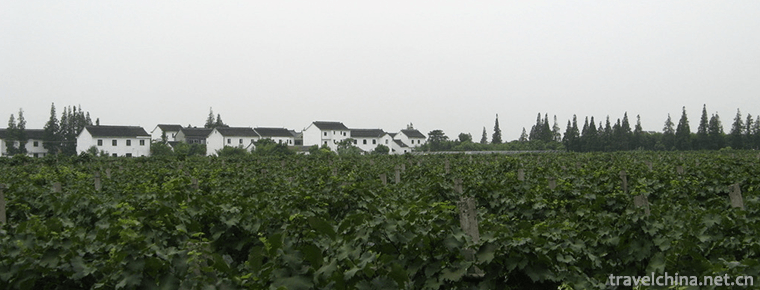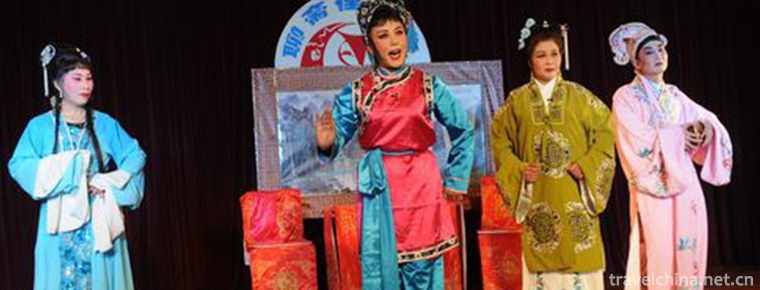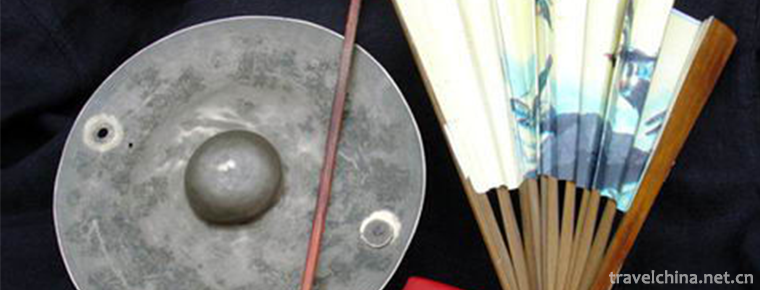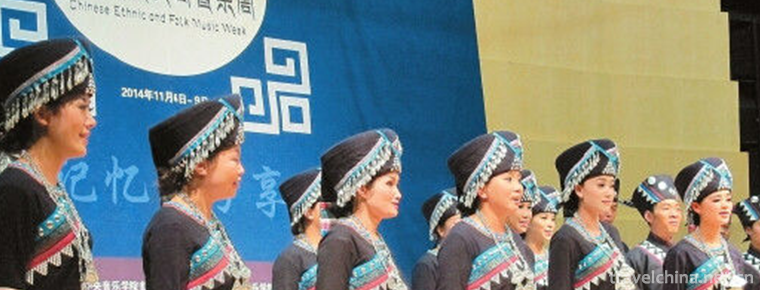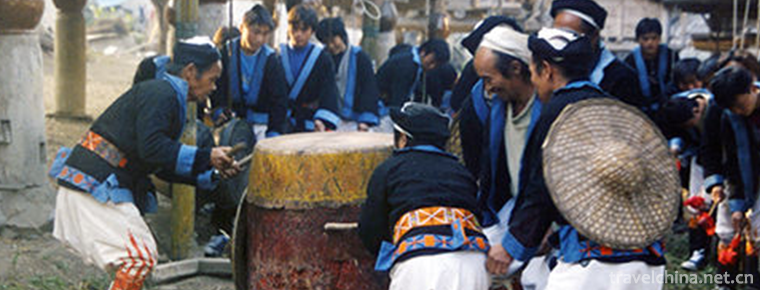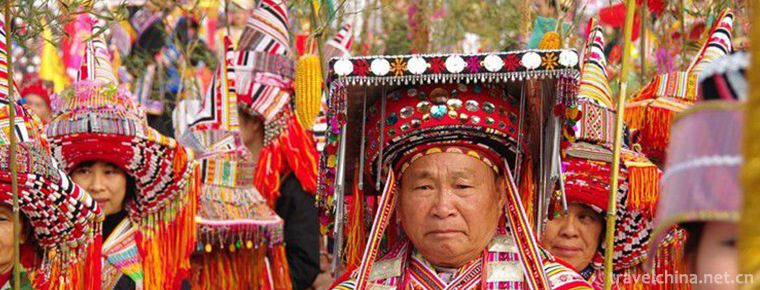Silver jewelry making skills
Silver jewelry making skills
Yunnan has been known as the "metal kingdom" since ancient times. Silver and copper resources in Western Yunnan are very rich, with Dali as a typical representative. Heqing Silver Ware Making Skills are mainly spread in Xinhua Village, Heqing County, Dali Prefecture. Have a long history. The Record of Heqing County records that "there are people who are good at smelting and processing instruments with copper and silver in the army. Villagers are accustomed to it, and all kinds of skills can be handed down from generation to generation. It can be seen that there are more than 500 years of history.
Among the silverware making techniques in Yunnan, Heqing County is the most famous. Local artists use pure silver as the main material, carving and pure silver wire drawing process combined, according to the required product shape, specifications, processed. The traditional folk handicraft features are retained. Silver wares are rich in shape, various in types, exquisite in craftsmanship and excellent in quality. The products are well-known far and near. They are exported to various provinces and cities, as well as to the United States, Japan, India, Malaysia, Nepal, Thailand, Pakistan and other countries. They are highly praised by the world.
historical origin
Xinhua Village is a Bai Nationality Village with a long history. It has more than 1000 years of production history of national handicraft. The production technology of silver national handicraft is the most prominent feature of Xinhua Village.
According to the records of Heqing County, as early as the mid-Ming Dynasty, Heqing had craftsmen who processed and made silver, bronze utensils and ornaments. The state's policy of vigorously developing the individual and private economy has injected vitality and vitality into the production of ethnic handicraft in Xinhua Village, making the traditional production of ethnic handicraft enter a new period of development and become the backbone industry of Xinhua Village.
Walking into Xinhua Village is basically "every household has its own crafts, every household has its own workshop". Products are exported to India, Pakistan, Thailand, Japan and other countries. Mainly sold to Tibet, Qinghai, Gansu, Inner Mongolia, Guizhou, Hunan, Sichuan and other provinces and regions. In the main tourist scenic spots of Western Yunnan, such as Lijiang Ancient City, Shangri-la County Town, Dali Butterfly Spring, Santa Temple and Kunming Yunnan Ethnic Villages, there are ethnic handicraft sales in Xinhua Village.
basic content
Silver processing is divided into 13 processes: 1. Material selection. 2. Refining and blending. 3. Hammer hammers silver pieces into sheets. 4. Making the first die, putting the silver sheet on the first die and hammering out the initial shape. 5. Filling the blank with rosin and other fillers. 6. Steels and hammers are used to strike marks on the surface of gold and silver to form various textures. 7. Silver is processed into silk by wire drawing. Jewelry is made by means of coiling, pinching, filling and stacking. 8. Gold and silver are wrongly cast into groove patterns on the surface of utensils. Gold and silver are embedded in the grooves and polished with wrong stones. 9. The fillers such as rosin are removed by melting at high temperature. 10. Combination welding makes the pattern into complete jewelry. 11. Clean the silver billet with plum vinegar and sour papaya juice. 12. Grind uneven areas with a setback knife. 13. Polishing immerses semi-finished products in detergent and brushes them back and forth with copper wire brushes.
Main features
First, "Heqing Bai folk silverware making skills" is a unique "folk handicraft" formed by Bai people in the long-term farming and living practice, combining the local people's production and living conditions and aesthetic characteristics with their own skills, which has a wide range of popularity and folk inheritance.
2. "Heqing Bai folk silverware making skills" is a kind of folk handicraft that Bai people are engaged in in in order to meet the needs of social production and life. Its handicraft products are durable, glossy, antioxidant and not easily discolored. It has been praised by Hechuan craftsmen.
3. There is no time limit for production. It can be produced all the year round. The price of products is affected by the market (gold and silver prices).
Important value
First, it is a carrier of spreading civilization and foreign exchange.
Second, it has irreplaceable inheritance value. Since ancient times, Chinese people have used gold and silver as symbols of wealth. The history of human use of silver can be traced back to 3000 B.C. Silver jewelry culture takes root in the folk. Silver workshops have gradually become a folk profession and become more and more prosperous. Silver jewelry is still popular in some minority areas. From the historical and realistic point of view, it inherits the track of the history of science and technology of ethnic minorities.
3. Silverware making is a traditional handicraft with its own strong characteristics created by the Bai people of Heqing in the long-term production process. It still retains the traditional style and characteristics of thousands of years.
4. Heqing Silver Ware Making is also one of the important bases for studying the economic, cultural and historical development of Bai nationality in Dali area.
Fifth, the whole process of Heqing Silver Ware making technology fully reflects the creative ability of craftsmen and craftsmen and the superb level of craftsmanship.
Survival status
Facing the impact of the development of the times and the strong culture, the ancient folk traditional craft of silverware production is facing the crisis of being gradually replaced by the mass production of modern machines. With the development of the western region and the development and expansion of folk tourism, people's way of thinking has changed. Because machine production has replaced manual operation, as well as the disordered competition of craftsmen and salesmen and driven by immediate interests, the original simple handmade things are replaced by modern machines. Its products have lost their original artistic value and collection commemorative value, and the traditional national and folk crafts and products are facing the crisis of sinicization, weakening and even extinction.
For a long time, the values that maintain and support Bai's traditional life style have changed dramatically. The farming culture of Bai's traditional society has been weakening day by day, and the traditional ideas have been greatly impacted. The handicraft skills of handicraft workshops are in urgent need of effective protection, guidance and standardization.

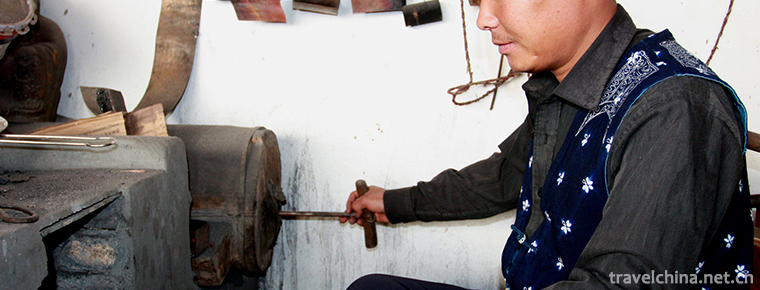
-
Cuiyun Lang Scenic Area
Cuiyun Corridor, also known as "Huangbai Avenue", is a green corridor composed of nearly 10,000 green roads and ancient cypresses. It is the oldest and most well-preserved ancient road traff.
Views: 110 Time 2019-01-06 -
Malu Grape Theme Park
Malu Grape Theme Park is located in Malu Town, Jiading District, Shanghai. It is a grape industry base and agricultural tourism demonstration site that integrates grape planting, production, scientifi.
Views: 116 Time 2019-02-06 -
Hubei storytelling
The evaluation of books in Hubei Province is a traditional art of rap and singing in Hubei Province. Popular in northern China, as an independent variety of storytelling,.
Views: 172 Time 2019-05-03 -
Liao Zhais folk songs
The spreading area of Liaozhai slang mainly distributes in Zibo City, Shandong Province. The Pu family and its descendants are the main inheritors. Liaozhai slang is a unique traditional folk music li.
Views: 195 Time 2019-05-13 -
Pinghu cymbal book
Cymbals are a unique form of local traditional folk art in the Wu dialect area of Jiangnan. According to the Records of Songjiang County, it was formed in the Qing Dynasty (1821-1850). It is now mainl.
Views: 134 Time 2019-06-09 -
Poop love song
In February 2006, a cultural census unexpectedly found "Poya Ge Shu" in Poya Village. Through expert research, 81 patterns in "Poya Ge Shu" have the character of words, and are one.
Views: 211 Time 2019-06-09 -
Qingyang Opera
During Jiajing period of Ming Dynasty, Yiyang Tune of Jiangxi flowed into Qingyang County of Chizhou Prefecture in Southern Anhui Province. It was combined with local language, folk opera (Kunshan Tun.
Views: 147 Time 2019-06-11 -
Monkey Drum Encouragement of Yao Nationality
"Monkey Drum Dance of Yao Nationality" is called "Jiuglang" in Yao language. It is popular among Baiku Yao people in Yaoshan. "Monkey Drum Encouragement" is performed in .
Views: 125 Time 2019-07-11 -
Panwang Festival of Yao Nationality
Panwang Festival is an important festival to worship ancestors Pangu, Pangeng and Panhu. People at home and abroad attach great importance to this national sacrifice ceremony. Launched by the Pan fami.
Views: 144 Time 2019-07-11 -
West Anhui University
West Anhui University (West Anhui University) was the 3 menstrual period of 2000. Ministry of Education Approved provincial comprehensive Undergraduate Colleges From the original West Anhui United Uni.
Views: 158 Time 2019-11-20 -
Your smile is so beautiful Tik Tok Songs 2020 Hot Songs
The most pleasant thing is to listen to a song like the spring breeze, pure and clean children's voice washing the city's dusty heart..
Views: 423 Time 2020-05-21 -
Guangan economy
In 2019, the GDP of Guang'an City will reach 125.04 billion yuan, an increase of 7.5% over the previous year (the same below). Among them, the added value of the primary industry was 20.43 billion yuan, an increase of 2.8%; the added value of the secon.
Views: 354 Time 2020-12-19

